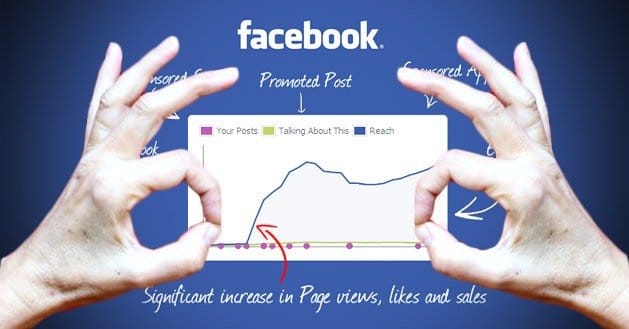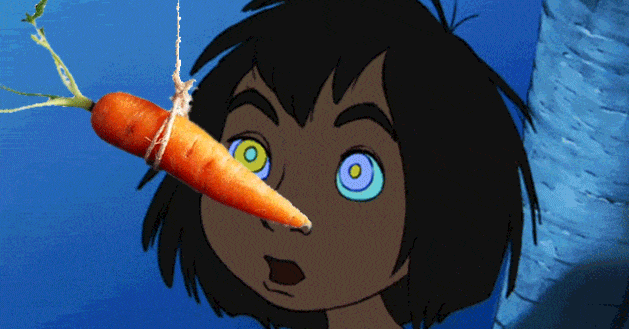 Written by ContentPowered.com
Written by ContentPowered.com
Facebook ads have a few important aspects. The text, the image and the landing page are all routes for possible optimization. Today, you can throw out your text and put the link to a blank page, because it’s time to discuss ad images.
Note: don’t actually set your link to a blank page and discard your ad copy. That’s a bad idea which will very likely cost you all of the conversions you might have obtained while experimenting with images.
1. Pick Images of the Right Size and Shape
Your ad image absolutely needs to be in landscape orientation. That is, wider than it is tall. Facebook recommends using an image that is 1200×628 pixels. However, given that the sidebar ad image – which this is mostly talking about – is only 254×133, you have room to play with. Your image needs to look good at that small size. Avoid anything that looks compressed, jagged, blurry or just plain bad. Facebook provides an “ads guide” to help you determine the exact dimensions for various images you may want to use, like on mobile devices or on the news feed.
2. Use Pictures of Smiling People
One of the most compelling emotions you can use in your ads is happiness. Smiling people are more compelling than other pictures of people. A happy person wielding your product in some way is a good place to start, but you don’t even need to go into that much detail. Often, just a happy person will do well enough. If you don’t want to use happiness, such as if you’re targeting an ad at people who are angry and frustrated about a common issue, you can use another emotion. Be cautious using people who look happy; make sure they really do look happy. A smile isn’t necessarily enough, if their eyes are cold and dead.
3. Pick Colors that Stand Out from Facebook’s Layout
Ads on Facebook, particularly sidebar ads, are part of the greater whole of Facebook. They have to compete with everything else on Facebook looking for attention. Sidebar ads are pinned between the primary focus of the news feed and the secondary focus of the chat bar. When a user’s eyes travel across that gap, you want to snag their eyes like Velcro. Facebook uses primarily blues and grays with black and white. You’re going to need to use something in the red-orange-purple spectrum to stand out more, though green, yellow and more exotic colors can also stand out.
4. Capture the Essence of an Object
Imagine if you posted an ad with a picture of a huge pile of peanuts. How much detail actually comes through? Will your readers be able to tell the objects are peanuts, and not pebbles or a dense crowd of bald people? Carefully consider the object of your image and crop and edit the picture to emphasize it. If this means making the colors unnaturally vibrant, zooming in more than may be comfortable or cropping at an odd point, so be it.
5. Include Text Conveying Important Information
Facebook doesn’t like allowing you to use more than a 20% text density on your ads, news feed or sidebar. That doesn’t stop some users from abusing the rule in sidebar ads, however. Use text to convey what’s important about your advertisement. If you can come up with a way in less than five words to convey the problem a user faces that you want to solve, do so. Be sure to keep text as clear as possible; you don’t want to try white text on a yellow background with no borders, for example.
6. Include Images of Adorable Animals
Animals, particularly cute animals, attract a lot of attention. Exotic animals can also bring in attention, particularly brightly colored animals like a tiger or a peacock. These animals stand out amongst the cats and dogs of Facebook’s rat race. You can use certain animals for the connotation they include, such as the elephant and donkey of American politics. You can pick them for their trendiness, like using grumpycat or a red panda. You can even just pick images that tug at the heartstrings, like a particularly fluffy kitten.
7. Distort or Exaggerate Images
Something utterly unrealistic can be attractive as well, even if it just makes the user wonder why that’s the image you chose. You can do anything from size-up a person standing next to something of common scale to bulk up people beyond a reasonable excess. The point is not to be realistic; it’s to draw the user’s attention with something they’ll be hard-pressed to justify in moments. They’ll even read the description and title in hopes of an explanation.
8. Use an Image Strange Enough to Attract Attention
You can always go the route of complete opposites. Tech company selling a piece of software? Post an image of a tree with text about how your software is gluten-free. It doesn’t have to make sense; it just has to get attention. Something odd enough that it draws a double-take. Users will click to see if there’s anything on your landing page about the ad, even though they know there probably won’t be. You can even modify your landing page to be part of the joke.
9. Avoid Images with Tiny Details
If you’re taking an image 1200 pixels wide and you’re compressing it to under 250, you’re going to lose a lot of clarity. Make sure you’re not spending a lot of time working with a large image, only to lose the detail you worked for in the compression. Test to make sure your image is recognizable and understandable at a low size, which means showing it to people who haven’t seen it in a larger size. The last thing you need is to resize your image, upload it and get a bunch of hits because it looked raunchy when it shouldn’t.
10. Test Images and Iterate Successful Adjustments
This is arguably the most important point. Everything above is all about finding images of the right size, clarity and subject to draw attention. Take a scattershot approach to your ads. Try everything you can think of and compare the results. When something works, narrow down your categories and try to find out why it worked. Once you know why, you can apply that principle to other ads in the future.


